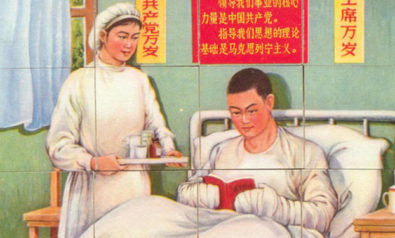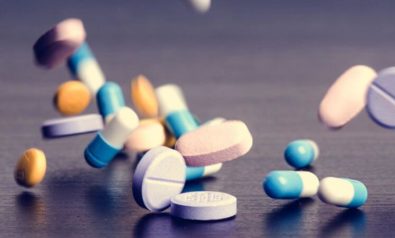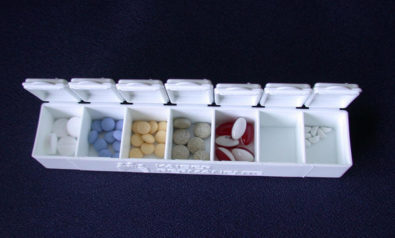Commentary on the supply and demand of medicine, its overuse, and the need to regulate and optimize the accessibility of medicinal drugs in the US and beyond. This is the last in a series of four articles. Please click here for part 1, part 2 and part 3.
As responsible citizens and consumers, we must act now in ways that help reduce financial, social and environmental burdens associated with excess prescribing, abuse, misuse, and overuse of medicines. Patients and consumers should gradually change their behavior and attitude about excess medicines and closely follow recommended use of and instructions for medicines. Information, awareness, and education, coupled with patient empowerment and more choices in health care, such as alternative medicines, diet and other lifestyle changes to include exercise, are important. As informed individuals, we should learn as much as possible about our own health and medical conditions and understand why we are taking medicines. We should learn about the dangers of medicines that are not disposed properly and their adverse impact on our community and physical environment.
The youth of our nations, as tomorrow’s leaders, educators, future parents and role models, should become more engaged and responsible for their personal health and the health of their own and extended families. Adults today must be better teachers and mentors to the young by practicing prudent lifestyle, healthy choices and behavior when it comes to sensible and responsible use of any medicine. Health and illness should be regarded and approached primarily as individual and community social responsibilities. A social movement of “caring for the community”, not just for oneself, will help start a paradigm shift in the quality of life from illness to good health, fitness and wellness in which prescription medicine is not necessarily the first choice of care or relief. Additional effort and resources should be devoted to primary prevention and to the maintenance of both short- and long-term physical and mental health.
The WHO advocates the following 12 key interventions to promote more rational use of medicines. [See http://www.who.int/medicines/areas/rational_use/en/]
1. Establishment of a multidisciplinary national body to coordinate policies on medicine use.
2. Use of clinical guidelines.
3. Development and use of national essential medicines list.
4. Establishment of drug and therapeutics committees in districts and hospitals.
5. Inclusion of problem-based pharmacotherapy training in undergraduate curricula.
6. Continuing in-service medical education as a licensure requirement.
7. Supervision, audit and feedback.
8. Use of independent information on medicines.
9. Public education about medicines.
10. Avoidance of perverse financial incentives.
11. Use of appropriate and enforced regulation.
12. Sufficient government expenditure to ensure availability of medicines and staff.
An ongoing global priority and dilemma is the need to manufacture and equitably distribute “priority” medicines to treat conditions for neglected patient groups of children, women, the elderly and individuals with “orphan” diseases. These essential, and potentially costly medicines, are desperately needed to treat conditions where there are few, if any, effective treatments, to include antibacterial resistances and pandemic influenza.
In the future, medicine will be personally designed and made for the individuals with the exact components, quality and strength for optimal specificity unseen today. This achievement would reduce adverse drug interactions and minimize the cost of medicines not proven to be effective. Nanotechnology and human genetics will advance the production of “customized medicines”.
Ultimately, we must be responsible while dealing with the current challenges of too many medicines at home and work and commit to the responsible and proper disposal of unused and expired medicines (UEMs). Unlike in the US, in countries like the UK, Canada, Scandinavia, and most European Union countries, UEMs can be returned to locations where medicines were purchased or dispensed. The US has no federal legislation on drug take-back programs or on legal destruction of consumers’ UEMs. However, DEA is committed to a national campaign for a safe and legal UEM collection. Funding remains a challenge.
We began research on UEMs in 2004. Results of our Foundation’s 2011 survey showed that 30 states had a combined total of 492 local take back programs: 43% were self funded, 26% were sponsored, 22% received grants and 9% were supported by other means. Law enforcement was present at 68% of these programs to ensure that proper procedures were followed to allow custody of controlled substances, prevention of theft or diversion, and transportation of collected UEMs to a approved disposal sites, required for controlled, witnessed incineration. Regulatory methods and disposal standards differ widely between states.
After the problems and concerns of UEMs are addressed, attention and resources should be placed heavily on the front end of this crisis, namely the prescribing and marketing of medicines. Patients and consumers must be more engaged in their own care in order to become more knowledgeable about their health problems and the appropriate indicated medicines, strength, dosage and treatment period. Patients and families must be respected and included as valued members of the healthcare team in a true patient-centric healthcare system, where they are empowered and accountable for the treatment plan. We all must be more assertive and responsible to health providers and accept medicines in the most appropriate quantity required for therapeutic benefits. We should strictly follow instructions for safe consumption and adherence to necessary medical treatment. Ultimately, patients, consumers, health providers and society in general must change their attitudes, behavior and social norms from responding to a health problem to preventing it. When we achieve this, healthcare expenditures will decrease and the quality of life will improve.
The views expressed in this article are the author’s own and do not necessarily reflect Fair Observer’s editorial policy.
Support Fair Observer
We rely on your support for our independence, diversity and quality.
For more than 10 years, Fair Observer has been free, fair and independent. No billionaire owns us, no advertisers control us. We are a reader-supported nonprofit. Unlike many other publications, we keep our content free for readers regardless of where they live or whether they can afford to pay. We have no paywalls and no ads.
In the post-truth era of fake news, echo chambers and filter bubbles, we publish a plurality of perspectives from around the world. Anyone can publish with us, but everyone goes through a rigorous editorial process. So, you get fact-checked, well-reasoned content instead of noise.
We publish 2,500+ voices from 90+ countries. We also conduct education and training programs
on subjects ranging from digital media and journalism to writing and critical thinking. This
doesn’t come cheap. Servers, editors, trainers and web developers cost
money.
Please consider supporting us on a regular basis as a recurring donor or a
sustaining member.
Will you support FO’s journalism?
We rely on your support for our independence, diversity and quality.











Comment